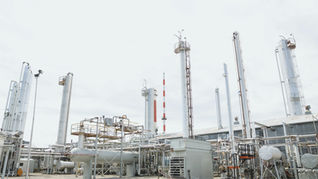Crossflow
Crossflow Filtration: Elevate Food & Beverage Production
In the intricate world of food and beverage production, achieving consistent quality and efficiency is paramount. PureTec's crossflow filtration systems offer a cutting-edge solution, ensuring superior product clarity, microbial stability, and sustainable operations.
The Crossflow Filtration Principle
Our systems utilise selective porous membranes to filter liquids, purifying and clarifying them without compromising taste or quality. The unique crossflow design circulates liquid parallel to the membrane, creating a turbulent flow that prevents filtered particles from settling and clogging the membrane.
Benefits for the Food & Beverage Industry
Enhanced Product Quality: Achieve consistent clarity, flavour, and microbial stability in your products.
Operational Efficiency:
Low relative energy requirements for reduced operating costs.
Consistent product quality throughout filtration runs.
Simplified process steps and streamlined production.
Sustainability:
Environmentally friendly process with no filter aid required.
Very low water consumption for resource conservation.
Minimal waste generation.
Cost Savings:
Long membrane lifespan (often several years) for reduced operating expenses (OpEx) and significant ROI.
Reduced downtime and increased productivity.
Applications
PureTec's crossflow filtration systems cater to a variety of food & beverage applications:
Wine & Cider: Clarify and stabilise wine and cider, enhancing flavour and shelf life.
Beer: Remove haze-forming particles and microorganisms for a bright, clear product.
Dairy: Process milk, whey, and other dairy products for improved quality and consistency.
Vinegar: Clarify and filter vinegar for optimal taste and appearance.
Ongoing Support
We offer comprehensive service contracts to ensure your crossflow filtration system operates at peak performance. Our expert team provides proactive maintenance, troubleshooting, and optimisation services, maximising uptime and system longevity.
Our crossflow filtration systems support sustainable practices by reducing water and energy consumption, minimising waste, and promoting efficient resource utilisation.

Site Services
Discover the range of services our sustainable water treatment can support:
Applications Across Industries
Our sustainable water treatment services cater to diverse industry needs:
Address
14a Bromyard Road Trading Estate, Bromyard Road, Ledbury, HR8 1NS














